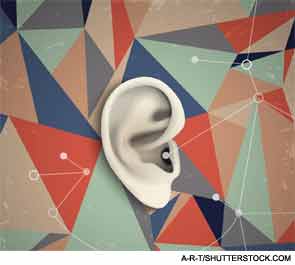Explore This Issue
December 2013

Guidelines recently published by the American Academy of Otolaryngology–Head and Neck Surgery (AAO-HNS) on tympanostomy tubes in children provide the first step in establishing some needed direction for the use of the most common ambulatory surgery performed in children in the United States (Otolaryng Head Neck Surg. 2013:149:S).
“Tympanostomy is the most common surgery performed in children, with between 600,000 and 700,000 sets of tubes placed annually in children in the United States,” said David E. Tunkel, MD, division director of pediatric otolaryngology in the department of otolaryngology–head and neck surgery at Johns Hopkins Medical School in Baltimore and one of the guideline’s authors. “Surprisingly, there are no uniform guidelines for the indication to place tubes or the care of children after tubes, so developing the guidelines was an opportunity for quality improvement.”
To fill this gap, a panel of experts representing a number of specialties undertook the rigorous process of culling the literature for the best evidence on the use of tympanostomy tubes in children and developed key action statements (see “Pediatric Tympanostomy Tubes: Key Actions Statements” below).
Characteristic of these types of practice guidelines, the authors emphasize that the guidelines are meant to guide and not to direct or mandate clinical decision making. Part of the guidance provided is in the level of recommendation accompanying each action statement based on the strength of the evidence, ranging from a “strong recommendation” to “option.”
As stated in the guidelines, “less frequent variation in practice is expected for ‘strong recommendations’ than might be expected with a ‘recommendation.’ ‘Options’ offer the most opportunity for practice variability.”
Dr. Tunkel emphasized that the purpose of the guidelines is not to restrict the use of tubes but to better clarify their most optimal use. “There is always a concern that a guideline will restrict the use of what has been perceived to be an historically effective procedure,” said Dr. Tunkel. “But when you look at the guideline in total and look at all the action statements together, it offers an excellent guidance on who benefits from the tubes the most, how these children should be assessed prior to surgery and how to care for them after surgery. In total, it probably won’t change the number of tubes placed, but it will make sure that the tubes are being used in the children who will receive the most benefit.”
Key Recommendations
Among the 12 action statements in the guideline, one highlighted by a number of experts as particularly important is action statement 1, which recommends against inserting tympanostomy tubes in children with a single episode of otitis media with effusion (OME) that lasts fewer than three months.
Leave a Reply